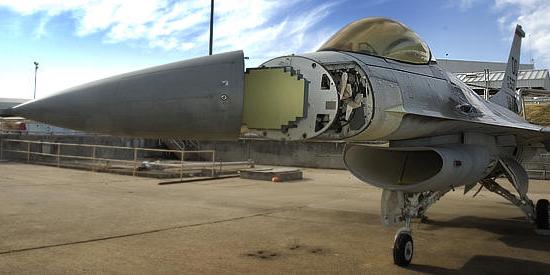
NEWSROOM
 |
NEWSROOM |
|
|
|
|
|||
|
By Mike Mitchell |
||||
 |
|
|||
|
Northrop Grumman has been the sole provider of radars for the F-16 and
for over 30 years has continually improved the F-16 radar's performance
and reliability. More than 5,000 F-16 radars have been produced for the
U.S. Air Force and 24 nations worldwide.
|
||||
The Lockheed
Martin F-16 is a multirole jet fighter aircraft originally developed by
General Dynamics for the United States Air Force. Designed as a
lightweight, daytime fighter, it evolved into a successful multirole
aircraft. The F-16's versatility is a paramount reason it has proven a
success on the export market, having been selected to serve in the air
forces of 25 nations. The F-16 is the largest Western jet fighter
program with over 4,400 aircraft built since production was approved in
1976.
The Fighting
Falcon is a dogfighter with numerous innovations including a frameless,
bubble canopy for better visibility, side-mounted control stick to ease
control while under high g-forces, and reclined seat to reduce the
effect of g-forces on the pilot. The F-16 has an internal M61 Vulcan
cannon and has 11 hardpoints for mounting various missiles, bombs and
pods. It was also the first fighter aircraft deliberately built to
sustain 9-g turns. It has a thrust-to-weight ratio greater than one,
providing power to climb and accelerate vertically—if necessary.
Although the
F-16's official name is "Fighting Falcon", it is known to its pilots as
the "Viper", due to it resembling a viper snake and after the Battlestar
Galactica starfighter. In addition to active, and reserve USAF units,
the aircraft is used by the USAF aerial demonstration team, U.S. Air
Force Thunderbirds and as an adversary/aggressor aircraft by the United
States Navy. |
|||
| ©AvStop
Online Magazine
Contact
Us
Return To News
|
|||
|